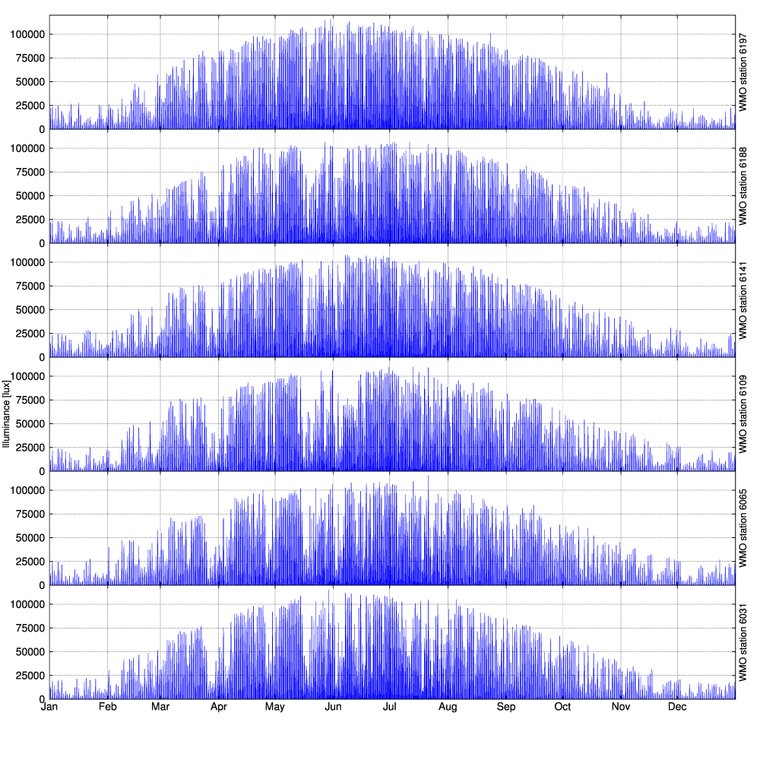




DRY illuminance data
DMI does not measure illuminance at their weather stations. The illuminances in the DRY 2001-2010 data set are therefore derived from the global horizontal irradiances (Wang et al. 2012; 2013).
The derivation of the illuminances shown below was done with the aid of the DISORT/libRadtran radiative transfer model (Stamnes et al. 1988; Mayer & Kylling 2005). With this spectral irradiances of the complete solar spectrum were calculated for liquid clouds with cloud droplets that had effective radii of 10 µm. The spectrum below a cloud with varying cloud water loads were then calculated and optimized until their integral equalled the measured global horizontal irradiances. Finally, the calculated spectra were weighted with the luminous efficiency of the average human eye as described by Stockman et al. (2008) to calculate the illuminances.
 |
References
- Mayer, B. & A. Kylling: Technical note: The libRadtran software package for radiative transfer calculations – description and examples of use, Atmos. Chem. Phys., 2005: 5; 1855-1877.
- Stamnes, K., S.-C. Tsay, W. Wiscombe & K. Jayaweera: "Numerically stable algorithm for discrete-ordinate-method radiative transfer in multiple scattering and emitting layered media," Appl. Optics, 1988; 27: 2502–2509.
- Stockman, A., H. Jägle, M. Pirzer & L. T. Sharpe: "The dependence of luminous efficiency on chromatic adaptation," Journal of Vision, 2008; 8(16): 1, 1-26.
- Wang, P. R., M. Scharling & K. P. Nielsen: "2001 - 2010 Design Reference Year for Denmark," beta.dmi.dk/fileadmin/Rapporter/TR/tr12-17.pdf, Technical Report 12-17, DMI, Copenhagen, Denmark, 2012.
- Wang, P. G., M. Scharling, K. P. Nielsen, K. B. Wittchen & C. Kern-Hansen: "2001 - 2010 Danish Design Reference Year - Reference Climate Dataset for Technical Dimensioning in Building, Construction and other Sectors," www.dmi.dk/fileadmin/user_upload/Rapporter/TR/2013/TR13-19.pdf, Technical Report 13-19, DMI, Copenhagen, Denmark, 2013.
